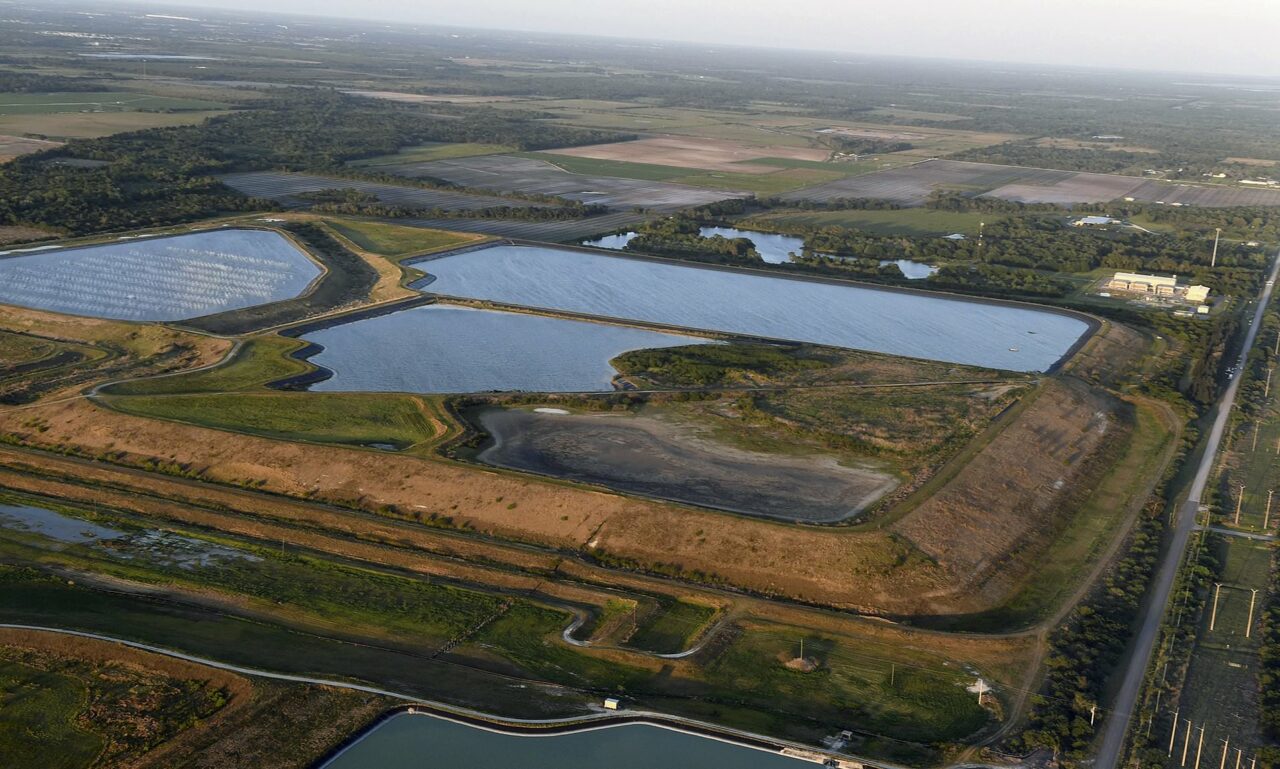
The polluted leftovers of Florida’s phosphate fertilizer mining industry, more than 1 billion tons in “stacks” that resemble enormous ponds, are at risk for leaks or other contamination when Hurricane Ian comes ashore in the state, environmental groups say.
Florida has 24 such phosphogypsum stacks, most of them concentrated in mining areas in the central part of the state. About 30 million tons of this slightly radioactive waste is generated every year, according to the Florida Industrial and Phosphate Research Institute.
“A major storm event like the one we are bracing for can inundate the facilities with more water than the open-air ponds can handle,” Ragan Whitlock, staff attorney for the Center for Biological Diversity environmental group, said in an email Tuesday.
“We are extremely concerned about the potential impacts Hurricane Ian may have on phosphate facilities around the state,” Whitlock added.
A leak in March 2021 at a stack called Piney Point resulted in the release of an estimated 215 million gallons of polluted water into Tampa Bay and caused massive fish kills. State officials, overseen by a court-appointed receiver, are working with a $100 million appropriation to shut down that long-troubled location.
“During the past six months, the receiver has made significant progress toward closing the facility,” lawyers for Gov. Ron DeSantis said in a court filing Monday.
But the Center for Biological Diversity, which sued with other groups to close down Piney Point, noted that 4.5 million additional gallons of wastewater were released into Tampa Bay in August.
“The imminent and substantial endangerment to the environment and human health and safety posed by Piney Point has not been abated” since a judge ordered a six-month stay in the case.
Hurricane Ian was nearing landfall along Florida’s southwest coast on Wednesday as a dangerous Category 4 storm. It was expected to cut through the state — very close to many of the gypsum stacks.
State Department of Environmental Protection records show that Piney Point has about 24 inches (60 centimeters) of rainfall capacity. Another facility in the Tampa Bay area, operated by phosphate giant Mosaic Co., has just over 9 inches (22 centimeters) of rainfall capacity.
___
Published courtesy of the Associated Press



